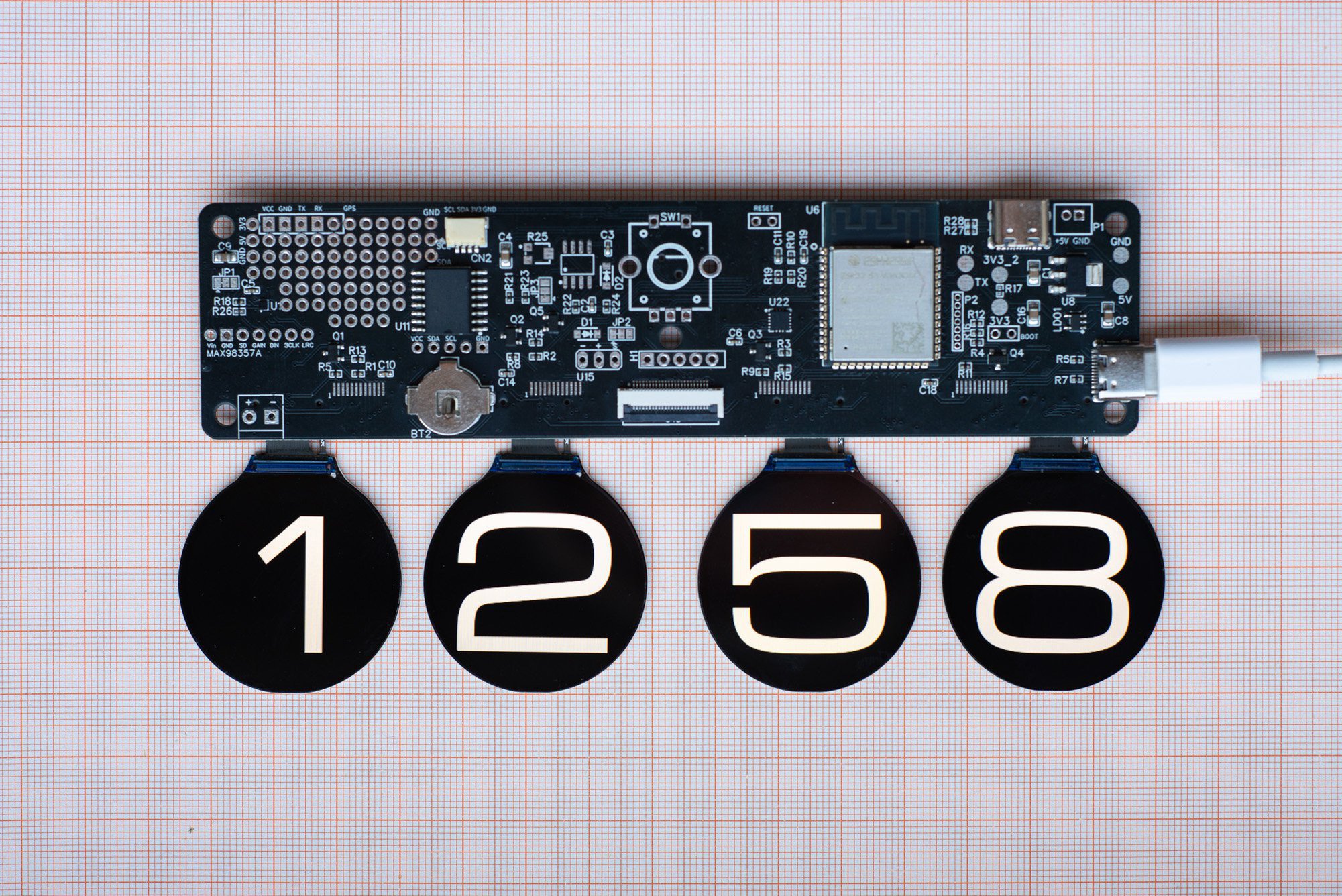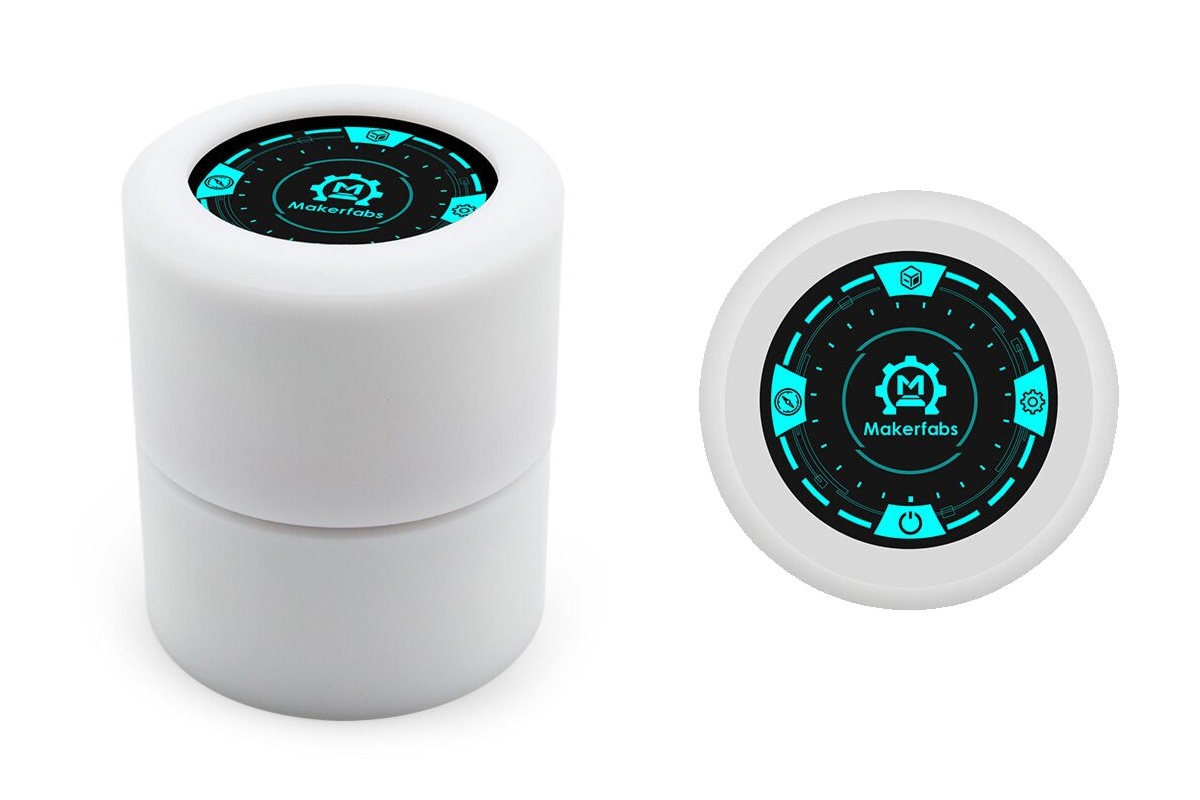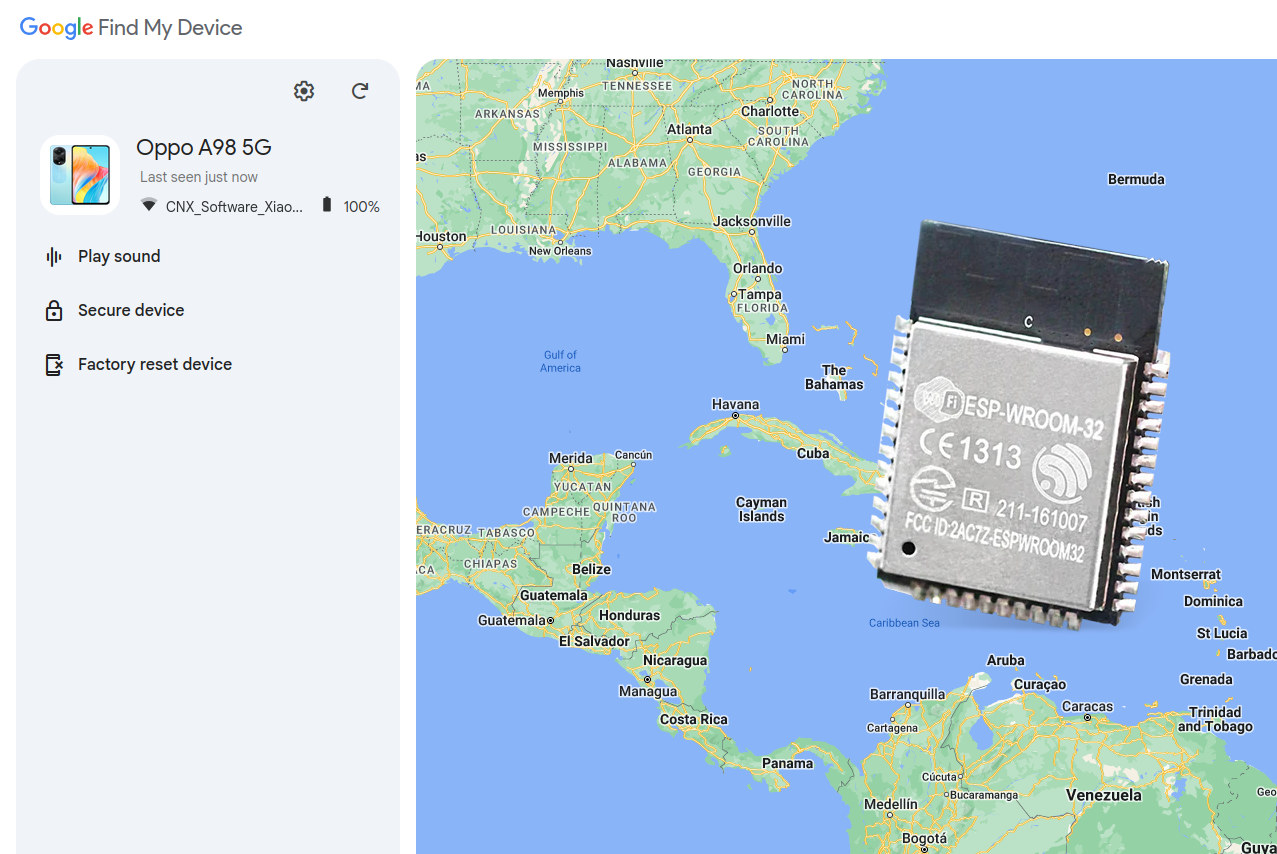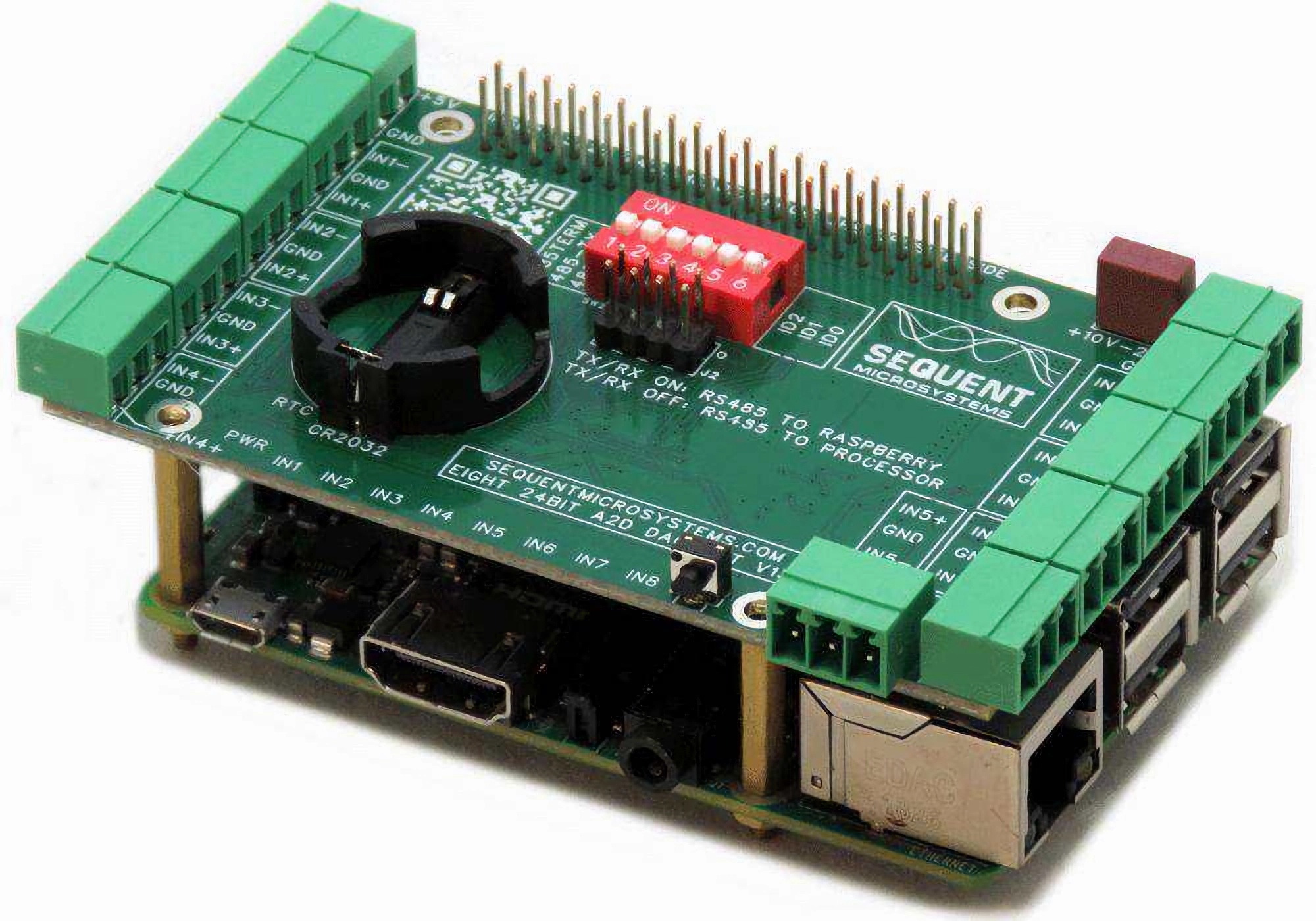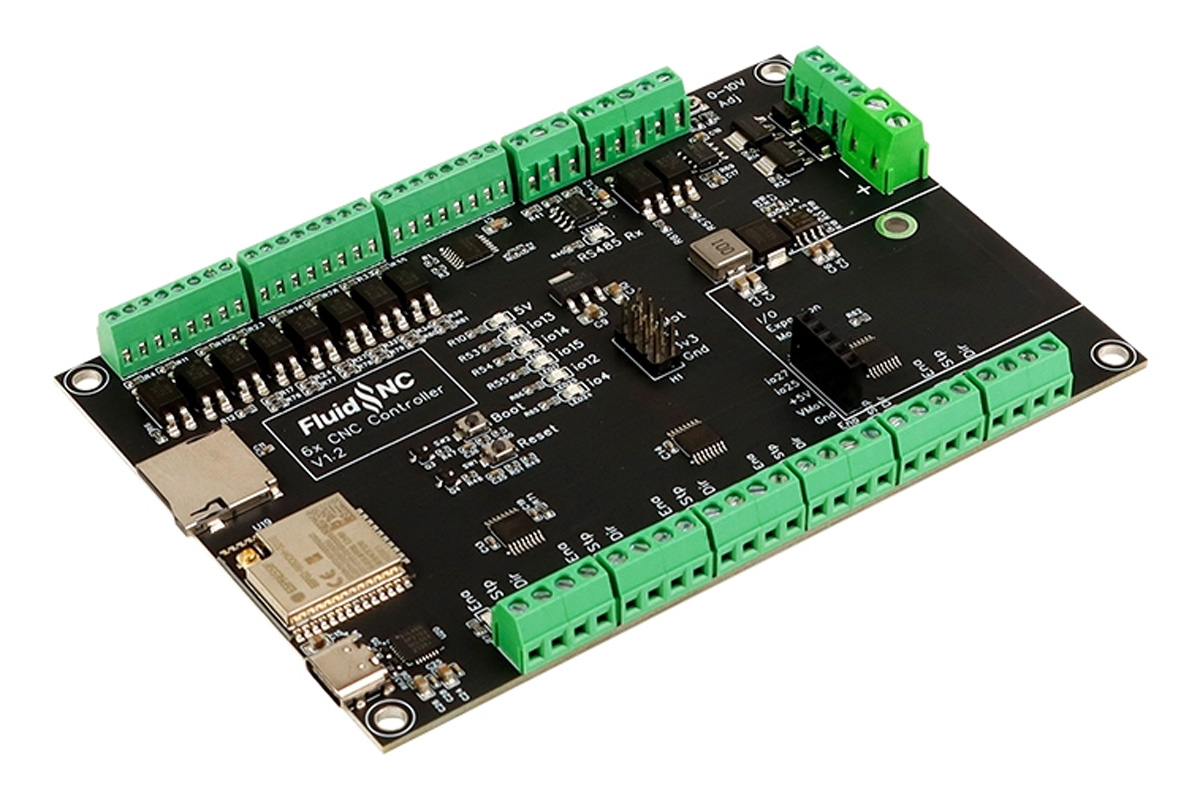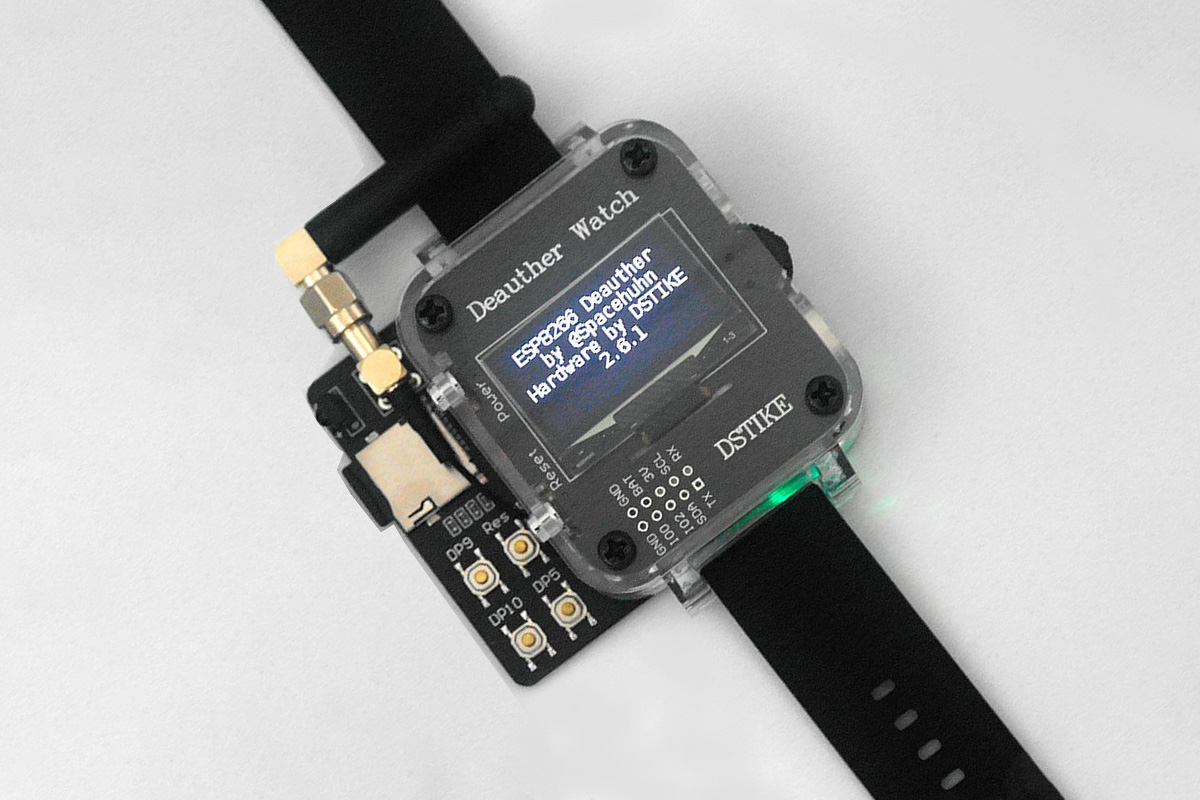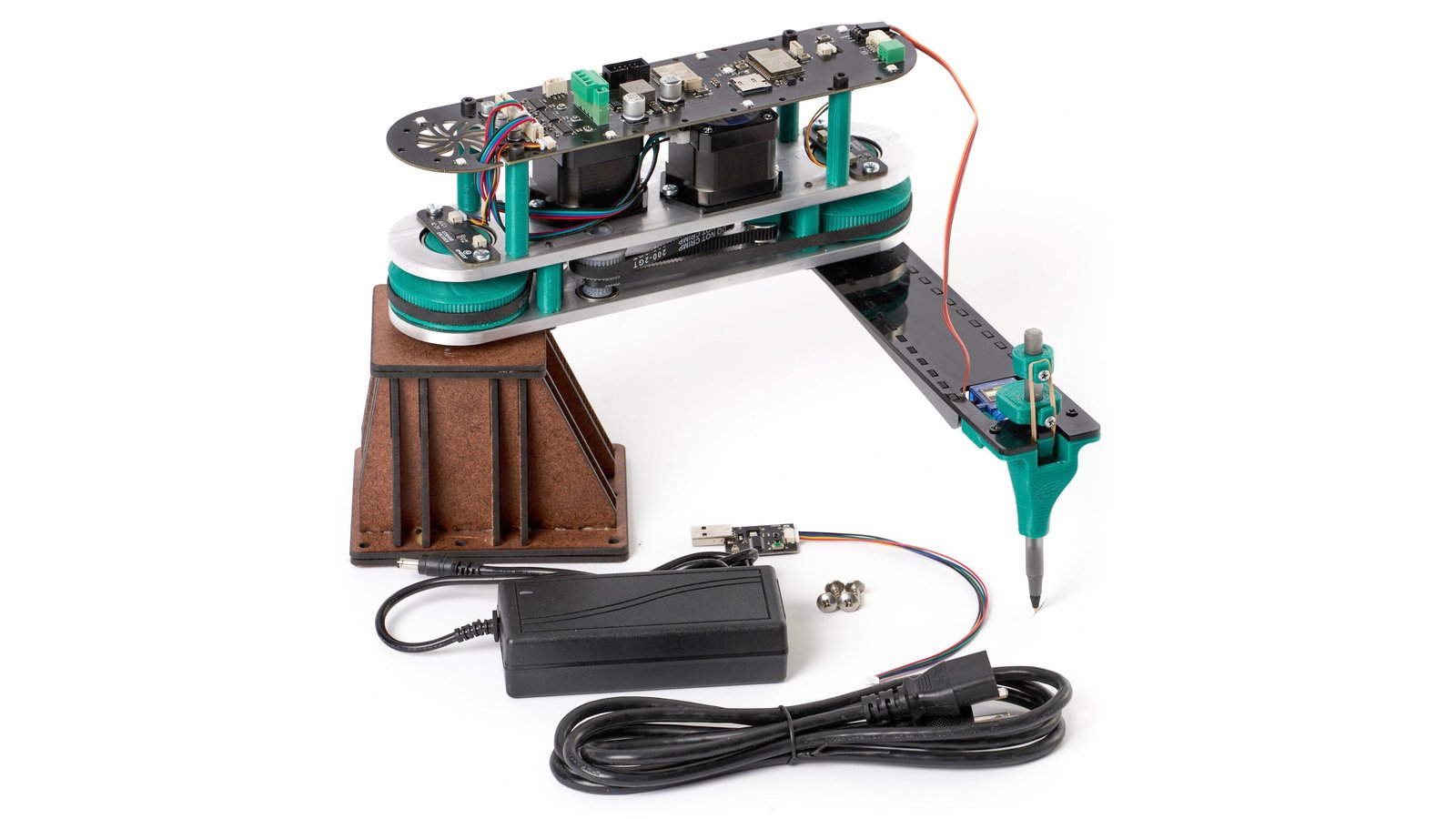The QuadClock PCB is an ESP32-S3-powered multi-display clock controller designed to serve as a foundation for creating a four-TFT-display clock. It supports up to four 1.69-inch rectangular TFT displays (240×280) or four 1.28” round displays (240×240). It manages essential functions such as driving the displays and maintaining precise time, allowing you to focus on crafting a unique enclosure or integrating additional features. It is open-source and is powered by the ESP32-WROOM-1 module with up to 16MB flash and 2MB PSRAM. It supports independent brightness control for each mounted display via four MOSFETs and includes an onboard real-time clock with a backup battery for accurate timekeeping. The QuadClock PCB is designed for enthusiasts and makers interested in creating multi-display clock projects. It can also be used for stock tickers, weather displays, and smart home dashboards. We previously covered the 2×2 Quad Display board with either Raspberry Pi Pico W or ESP32-S3-WROOM-1 […]
MaTouch SmartKnob Assembled ESP32-based rotary knob with touchscreen display sells for $69
Makerfabs has recently released “MaTouch SmartKnob Assembled” based on the SmartKnob View open-source hardware design but enclosed in a plastic case. As a reminder, the SmartKnob View is an ESP32-S3-based DIY rotary knob built around a BLDC motor. With clever software and engineering, the motor is so configured that it can do software configurable detents, haptic feedback, magnetic encoder, and more. It also has a round LCD touchscreen, and USB-C, and features a convenient 3D enclosure that can also be attached to your wall with some sticky pull tabs. The SmartKnob View was a great concept, but its DIY nature made it difficult for many people to get their hands on one as it was never manufactured in quantities. The MaTouch SmartKnob Assembled solves this issue by building upon the original design and comes fully assembled for immediate use. The original module integrates a 240×240 round LCD and uses an […]
GoogleFindMyTools locates ESP32-based Bluetooth trackers using Google Find My Device network
Leon Böttger’s GoogleFindMyTools is a re-implementation of Google’s Find My Device network. It works with Android devices and commercial trackers, but experimental support for ESP32-based trackers has recently been added.
The implementation features two components. First, the main.py Python script that will list and locate devices, and then the ESP32 firmware implemented in C with the ESP-IDF. The host computer will also need several Python libraries that can be installed with “pip install -r requirements.txt” and Google Chrome web browser.
This is the output of the Python script on my Ubuntu laptop:
Stackable HAT brings high-resolution 24-bit ADC to Raspberry Pi (Crowdfunding)
Sequent Microsystems’ “Eight 24-bit ADC 8-layer Stackable HAT” is a Raspberry Pi expansion board designed for home automation projects. It is compatible with all Raspberry Pi models with a 40-pin GPIO header and features a stackable design that provides scalability for more complex setups. It includes eight independent 24-bit ADC channels, providing ultra-high resolution for measuring small analog signals accurately. It also features programmable gain amplifiers on each input channel for amplifying weak signals and optimizing the ADC’s input range. It is stackable up to eight layers, allowing for up to 64 differential analog inputs. It provides 4A continuous and 5A peak power to the Raspberry Pi via the GPIO header. It sends data via the I2C lines, leaving all other pins free for use. Also, it supports isolated RS485 communication for long-distance connectivity. The 8-layer Stackable HAT for Raspberry Pi is suitable for precision data acquisition applications, including industrial […]
FOSSASIA 2025 – Operating systems, open hardware, and firmware sessions
The FOSSASIA Summit is the closest we have to FOSDEM in Asia. It’s a free and open-source event taking place each year in Asia, and FOSSASIA 2025 will take place in Bangkok, Thailand on March 13-15 this year. It won’t have quite as many speakers and sessions as in FOSDEM 2025 (968 speakers, 930 events), but the 3-day event will still have over 170 speakers and more than 200 sessions. Most of the sessions are for high-level software with topics like AI and data science, databases, cloud, and web3, but I also noticed a few sessions related to “Hardware and firmware” and “Operating System” which are closer to what we cover here at CNX Software. So I’ll make a virtual schedule based on those two tracks to check out any potentially interesting talks. None of those sessions take place on March 13, so we’ll only have a schedule for March […]
FluidNC-compatible CNC controller supports 6 stepper drivers, web-based configuration
US-based CNC and motion control developer Bart Dring has designed the 6x CNC Controller FluidNC-compatible CNC controller board built around an ESP32 (pre-programmed with FluidNC) module and including 6 external stepper motor drivers with 5V signals. It allows configuration, upgrades, and control via a web browser. The controller also includes individual step/direction controls and LED indicators for easy setup. It offers eight input ports for limit switches, probes, and controls, along with multiple spindle control options, including RS485 VFD, 0-10V, PWM, relay-based, brushless motor (BESC), and laser PWM with enable signals. Additionally, it has two 3A MOSFETs for relays or solenoids, a MicroSD card slot for local G-code storage, and an expansion socket for GPIO extenders or pendant interfaces. 6x CNC Controller specifications Wireless module – Espressif Systems ESP32-WROOM-32E ESP32 dual-core microcontroller 4MB flash 2.4 GHz WiFi and Bluetooth LE connectivity, built-in PCB antenna Storage – MicroSD card socket for […]
The Deauther Watch V4S IR is a Wi-Fi hacker watch that can run up to 21 scripts via IR remote for wireless and HID attacks
We previously wrote about the Deauther Watch X used for wireless pentesting. The company has now released the Deauther Watch V4S IR an Wi-Fi hacker watch with a built-in infrared (IR) remote control for executing several scripts stored on a microSD card. It supports deauther attacks, Bad USB (HID) attacks, WiFi packet monitoring, and real-time clock adjustments. The new version features a 1,000mAh battery that can be charged via USB and it comes with includes a Type-C power cable, acrylic cover, and software manual. You can modify the Ducky Script inside the text files but must keep the filenames unchanged for proper operation. These features make this tool useful for cybersecurity professionals and enthusiasts for network security testing, penetration testing, and more. Deauther Watch V4S IR specifications: MCU – ESP8266 WiFi SoC @ up to 160 MHz with 160KB SRAM, 4MB SPI flash Storage – MicroSD card (preloaded with 21 […]
Tobor open-source, modular robotic arm features two ESP32 modules (Crowdfunding)
Tobor (robot spelled in reverse) is a modular and open-source robotic arm platform powered by the ESP32-WROVER-I and ESP32-WROOM-32 (FluidNC CNC Controller core) modules. It is described as a “fully-featured robotic system that can fit on your desktop and is capable of helping you automate your workflow.” Tobor is billed as a customizable assistant for complex tasks such as assembly line help, CNC design, and rapid prototyping. The Tobor ecosystem includes several open-source components, including robotic arms, motion platforms, sensors, and actuators, that can be combined to create a unique system for “almost any desktop automation.” The Tobor Robot Arm supports multiple toolhead options such as the pen plotter toolhead, z-stage toolhead with 4th axis and suction cup, and the pick and place expansion pack. We have seen other open-source robotic platforms such as the SO-ARM100 AI robotic arm kit, CYOBot v2, and MIKRIK V2 Robot Car. Tobor Robot Arm […]


